Faced with a problem such as varicose veins of the lower extremities, the patient should not hesitate to visit a doctor and start treatment. An experienced specialist will conduct a comprehensive examination and draw conclusions about which therapy tactics are best to take - conservative or surgical treatment. If, for some reason, the drugs cannot have the desired effect on the patient's blood vessels, doctors prescribe a surgical intervention, which can already help unconditionally.
Indications and if surgery is needed.
Surgery to remove varicose veins is a radical approach to treating pathological vessels, so the indications will be appropriate.
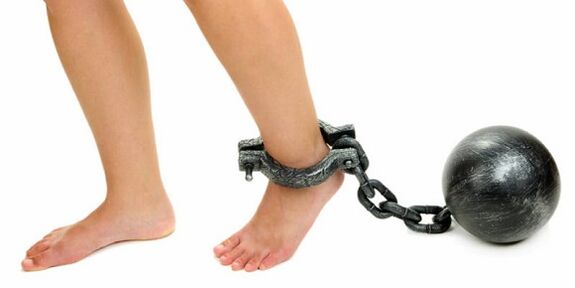
The operation will be justified in the following cases:
- total varicose veins of the lower extremities, visible to the naked eye;
- constant severe swelling of the legs, discomfort, pain and a feeling of heaviness in the legs or other places, depends on the location of the pathological process;
- a direct threat that existing varicose veins in a certain part of the body will be complicated by a more dangerous disease (for example, thrombophlebitis, trophic ulcer or pulmonary embolism).
In a direct conversation with the doctor, you will be able to determine whether the operation is worth performing, and also talk about what types of surgical interventions exist in general.
Contraindications for the surgical treatment of varicose veins.
Despite the strong indications, there are many cases in which surgery to remove varicose veins from the legs cannot be performed. For example, if a patient has the later stages of varicose veins, surgical treatment will not always be possible. In such cases, doctors focus on medications, but cannot help enough.
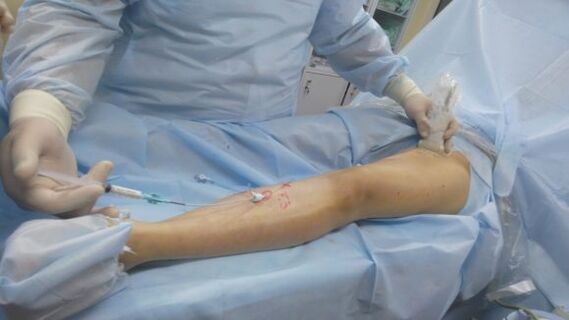
Several other mandatory contraindications:
- the presence of skin diseases at the site of the affected vein, for example, eczema, pyoderma, dermatitis, etc.
- serious diseases of the cardiovascular system: hypertension, coronary artery disease, heart failure;
- acute inflammatory process inside the vessel (phlebitis);
- previously transferred thrombosis or pulmonary embolism;
- active process of obliteration of atherosclerosis;
- advanced age;
- pregnancy period.
Patients should remember that in the case of taking medications for other diseases, the attending physician should be informed.
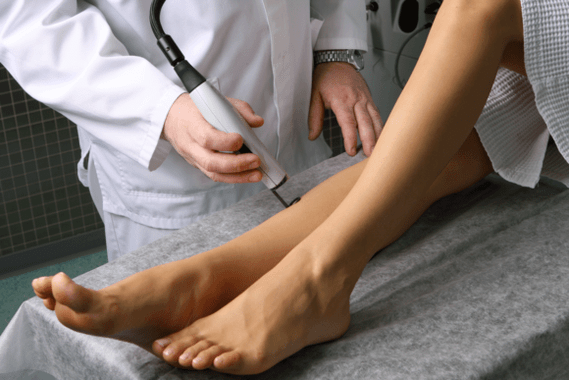
Sclerotherapy technique
Sclerotherapy is a procedure whose principle is to inject a special substance into the affected vessel, which causes further contraction and excessive growth of the vessel. The main advantage of this method is that the procedure does not require incisions or surgical access.
The essence of the procedure is as follows: with the help of a syringe, the doctor injects a sclerosing substance into the pathological vessel. During one stage of sclerotherapy, a specialist performs two to ten such injections. The effect does not appear at the same time; it usually takes 2 to 8 weeks and several sessions of such a procedure. Under the action of the sclerosant, the vein gradually narrows and then grows too large and disappears.
There are two types of manipulation:
- Microsclerosis. It is justified in the initial stages of varicose veins, when small vessels that are more superficially participate in the process. In such cases, the amount of sclerosant required is minimal.
- Ecosclerosing. It is performed in deeper veins by duplex examination to more accurately determine the location of deep varicose veins.
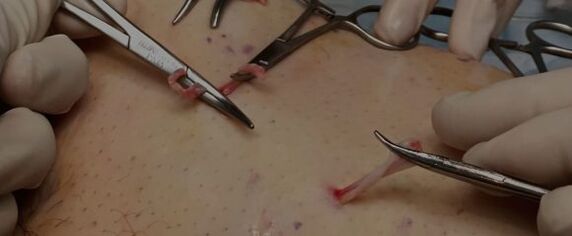
Laser coagulation
Laser surgery for varicose veins is by far the most popular. This is due to the fact that the procedure itself is performed under local anesthesia, does not require large incisions or tissue trauma, and has an immediate effect.
The vascular surgeon must inform in detail how the operation is performed, but, in general, its essence lies in the introduction of a special laser light guide into the diseased vessel. A laser beam, which has its own wavelength, passes through this device and acts on the walls of the varicose vessels. Under its action, the vessel coagulates and becomes clogged.
This technique is justified if the patient has varicose veins in the leg or groin area. In addition, laser coagulation will work more effectively in large vessels, so the use of this technique in case of small vein damage is not justified.
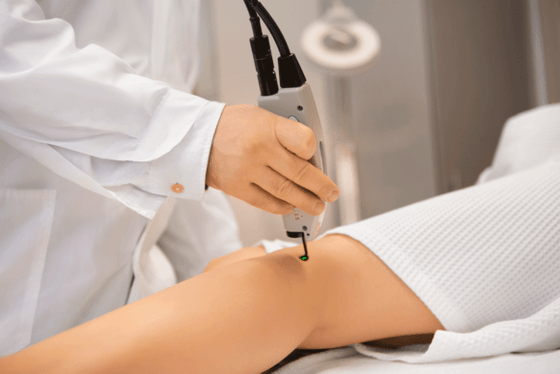
Vein ligation
Vascular ligation is a more radical operation for varicose veins in the legs, requiring a large incision and direct surgical access.
The operation is performed on the legs more often than on the vessels in the pelvic area. The saphenous vein ligation technique will be effective. The vascular surgeon accesses the indicated vessel at the point where the saphenous vein joins the femoral vein. Next, the surgeon makes a bandage with special threads.
In women, pelvic vein surgery may be done. In this case, the ovarian vein is accessed and ligated.
Removal of dilated vessels
The most common and proven method of surgery is phlebectomy. Doctors do it almost every day and it is more affordable than laser coagulation or sclerotherapy. Such an operation for varicose veins is performed under general anesthesia or with epidural anesthesia.

To remove the dilated vessel, the surgeon needs an incision of only 0. 5-1 cm long, having opened the access to the area with varicose veins, the surgeon ligates the vessel, crosses it and extracts it.
As a subspecies of this intervention, the miniphlebectomy is distinguished. It differs from conventional phlebectomy in that the surgeon requires punctures rather than incisions to access the vessel. This operation is effective in affecting small superficial vessels. Its main advantage is that it does not leave traces or cosmetic defects.
Peel
Stripping is one of the subtypes of phlebectomy, during which a special tube is used to remove a vein. As with simple varicose vein removal, the surgeon makes an incision in the saphenous vein and accesses the vessel. The doctor then makes another incision, in the middle or lower leg.
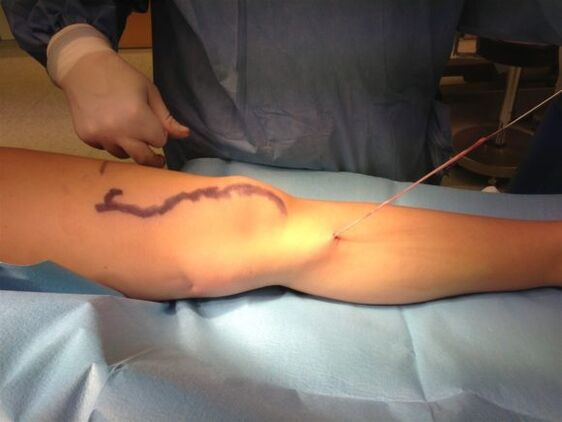
Through the upper access to the great saphenous vein, a special probe is inserted - an extractor probe. The surgeon previously bandages the mouth of the adjacent veins. The tube is passed through the entire vessel to the lower incision, after which it is used to remove the vein.
In peeling, several types of manipulation are also distinguished:
- Short peeling. Not the entire vessel is removed, but only a certain area that is subject to the varicose process.
- Total. Such an operation for varicose veins of the lower extremities allows you to get rid of a large area of diseased vessels and prevent further relapses.
Consequences of surgery and rehabilitation.
Having varicose veins, the operation can have the opposite effect and cause various complications. They must be separated by the type of intervention performed:

- After sclerotherapy, the patient may experience itching, burning, skin discoloration, and the appearance of edema at the injection site. An increase in body temperature and the appearance of general weakness are possible. Subject to the postoperative rules, the symptoms disappear in a couple of days.
- After undergoing laser coagulation, the patient may experience a feeling of tension in the thigh area, minor bleeding, and an increase in body temperature. With proper treatment, symptoms disappear within a week.
- Vein ligation can be complicated by trauma and bleeding during the operation.
- Phlebectomy and removal can damage the nerves in the skin. This can be accompanied by loss of sensation, numbness in the legs, pain at the incision sites.
For all surgical treatment methods, there is a common complication - thrombosis. This is a dangerous process, but the possibility of it occurring as a result of any operation is very low.
To avoid the aforementioned complications and shorten your rehabilitation period as much as possible, you must follow the recommendations for the care of your health and blood vessels in the postoperative period.
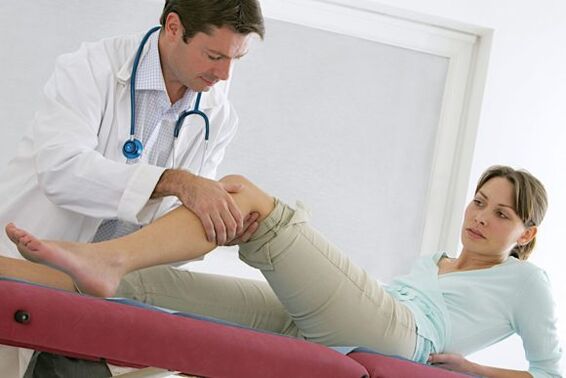
Subject to the postoperative rules, the symptoms disappear in a couple of days.
There are a number of advantages and disadvantages that experts recommend following:
- Immediately after the end of the operation and in the first week after it, it is necessary to wear special compression underwear; it can be in the form of stockings, stockings, socks, and for this purpose you can also use a regular elastic bandage.
- Eliminate bad habits: alcohol consumption, smoking, drug use.
- Avoid baths and saunas, as well as baths that are too hot.
- In the place where the operation was performed, you can not do any cosmetic procedures and apply various cosmetics.
- Avoid strenuous physical activity. In the event that before the treatment the patient participated in any type of sport (especially hard), after the operation, heavy loads should be forgotten for at least 5-8 weeks. In the future, you should consult with your doctor whether it is possible to continue intensive sports.
- Do daily prophylactic exercises lasting no more than 15-30 minutes.
- Comply with the phlebologist's prescriptions for taking medications: administer regular prophylactic anticoagulants, phlebotonics, non-steroidal anti-inflammatory drugs, thrombolytics and other medications.
In general, all these operations have good reviews from both doctors and patients. Which treatment approach is suitable for a particular patient should be decided only with the attending physician.























